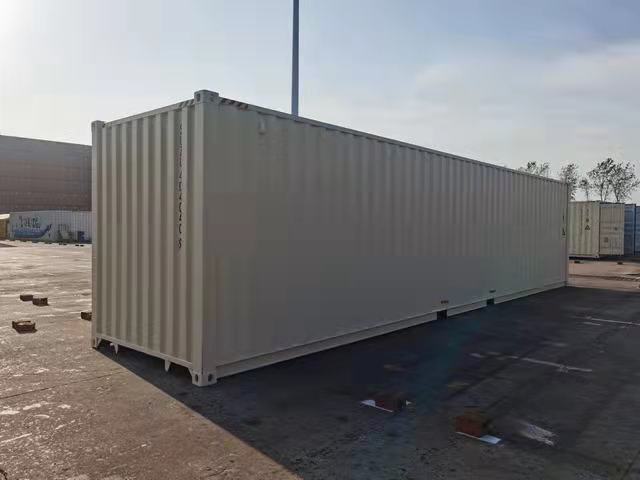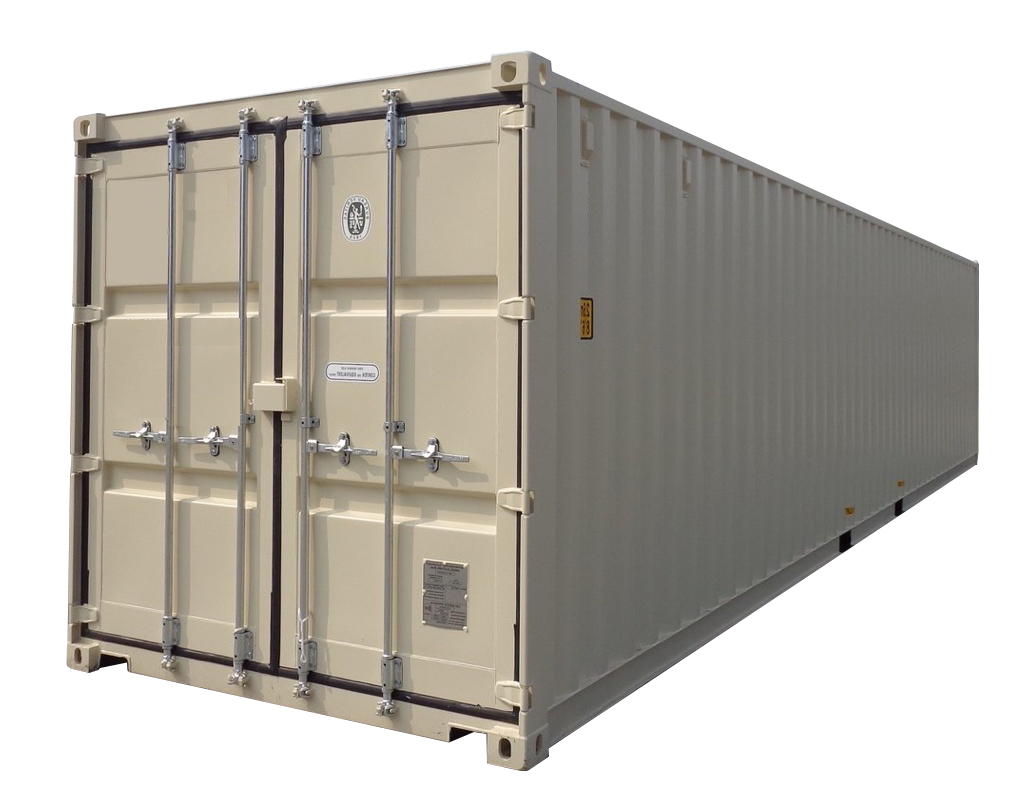Thinking of a Mobile Business? Rent New Shipping Container 40 x 8 x 9.6 Like a Pro
Thinking of a Mobile Business? Rent New Shipping Container 40 x 8 x 9.6 Like a Pro
Blog Article
The Ultimate Guide to Selecting the Right Shipping Container for Your Needs
When it concerns choosing the appropriate delivery container, recognizing your specific requirements is vital. You'll desire to take right into account elements like size, kind, and product to assure you make the most effective selection. From basic sizes to specialized choices, there's a lot to check out. And also, budgeting for both the container and any kind of adjustments can make a huge distinction. Let's break down the essential facets to aid you locate the ideal fit for your demands.
Recognizing Delivery Container Sizes
When you're choosing a delivery container, understanding the numerous sizes available is important for making the ideal choice. Delivering containers commonly can be found in basic sizes of 20 and 40 feet, however you'll also discover various other measurements. Recognizing the dimension you need depends upon what you prepare to store or transport.If you're moving smaller sized products, a 20-foot container may be ideal, while larger deliveries often require a 40-foot container. The elevation can likewise differ; high dice containers provide additional upright area, which can be helpful for taller goods.Before choosing, determine your cargo, and think about exactly how much area you'll require for packing and unloading. Constantly consider prospective future demands-- going with a somewhat larger container might save you headache down the line. Ultimately, selecting the best size will certainly enhance performance and assure your products are protected during transit
Kinds of Delivery Containers Available
There are numerous sorts of shipping containers offered, each developed for specific purposes and freight needs. The conventional dry container is flexible, excellent for general freight. If you're delivering perishable goods, take into consideration a refrigerated container, which keeps a regulated temperature. For large items, high cube containers use extra elevation, fitting taller loads.If you need to transfer heavy equipment or devices, flat rack containers supply a strong base without wall surfaces. Open-top containers allow for easy loading of high cargo, with a removable tarp covering for security. If you're searching for adaptability, take into consideration a collapsible container that can be conveniently stored when not in use.Lastly, specialized containers like tank containers are made use of for liquids, while vented containers are made for bulk freight that needs ventilation. Understanding your freight kind will assist you pick the best container to fulfill your delivery needs efficiently.
Material Factors To Consider for Longevity
When choosing a delivery container, the material plays an essential role in its resilience. You'll desire to evaluate the advantages of steel versus light weight aluminum, specifically concerning rust resistance. Recognizing these factors can aid you make a more informed selection for your shipping needs.
Steel vs. Light weight aluminum Containers
How do you pick in between steel and aluminum containers for your shipping requires? Beginning by considering toughness. Steel containers are robust and offer superb stamina, making them excellent for hefty tons and harsh problems. They resist damage from effects and are commonly much less costly, which can be a significant variable for budget-conscious buyers.On the other hand, aluminum containers are lightweight, which can save you on delivery expenses. They're less complicated to maneuver and are a terrific selection if you need to deliver products often. Aluminum is normally more pricey and much less robust than steel. Evaluate your details requirements thoroughly, including weight, cost, and the kind of freight you'll be delivery, to make the ideal selection for your scenario.
Rust Resistance Variables
Choosing the right product does not just include weight and cost; rust resistance plays a significant function in durability. When selecting a shipping container, think about the setting it'll deal with. Steel containers, while solid, can corrosion otherwise effectively treated. Seek alternatives with protective finishes or galvanization to boost their life-span. Light weight aluminum, on the various other hand, offers natural deterioration resistance, making it optimal for coastal areas or damp problems. It can be more costly. Furthermore, assess the container's use-- if it'll be subjected to chemicals or harsh weather condition, prioritize materials that can stand up to these conditions. Purchasing a corrosion-resistant container now can save you from pricey repair services or replacements down the line. Choose sensibly for long-term advantages.
Modifications and Personalization Options
Delivering containers aren't simply for transferring goods; they can be transformed to fulfill your particular needs via numerous alterations and modification alternatives. You can transform a common container right into a cozy office area, a short-lived retail store, or even an individual gym. The possibilities are nearly endless.Think regarding including home windows, insulation, or air flow to improve comfort. You could additionally take into consideration electrical circuitry, plumbing, and even custom-made shelving to boost capability. If safety and security's an issue, enhanced locks can give tranquility of mind.For visual appeal, you can paint the container or add a special layout to make it stand apart. Do not neglect regarding flooring choices-- whether you desire sturdy plywood or something much more sophisticated, it can boost the space.Ultimately, customizing your delivery container to fit your demands can improve usability and create a distinct atmosphere that reflects your design.
Examining Your Transport Demands
When it concerns using your customized shipping container, comprehending your transportation requires is crucial. Begin by identifying what you'll be delivery-- whether it's hefty devices, retail products, or personal items. Each sort of freight has different needs relating to size, weight, and accessibility.Next, take into consideration the range and mode of transport. Are you delivering locally, across the country, or internationally? This influences the container's style and functionality. If you're making use of vehicles, guarantee your container fits common measurements for very easy loading explanation and unloading.Additionally, consider transit problems. Will your things need unique security from weather condition or temperature level changes? If so, you might require insulation or ventilation features in your container.Lastly, assess just how commonly you'll be delivering items. Regular deliveries may need a much more durable and functional container to fulfill ongoing needs. By resolving these variables, you'll be well-prepared to pick the appropriate shipping container for your needs.
Budgeting for Your Shipping Container
Setting an allocate your shipping container is important for ensuring a smooth investing in procedure. First, establish just how much you can pay for to spend. Bear in mind that prices can vary substantially based on size, problem, and type. New containers commonly set you back extra, but made use of ones can use considerable savings.Next, take into consideration any extra expenses you could incur, such as transport costs, distribution costs, and alterations. If you plan to personalize the container, factor in those costs also. Research study various vendors to contrast costs and discover the very best deal that meets your needs.Don' t fail to remember to include any permits or regulations that may use to your purchase and use of the container. By plainly outlining your spending plan, you'll be better prepared to make enlightened decisions, ensuring you obtain the best container without damaging the financial institution.
Maintenance and Look After Long life
To assure your shipping container lasts for several years, regular upkeep is vital. Begin by inspecting the outside for rust, damages, and damage. If you identify any concerns, address them quickly to avoid additional damage. Tidy the container regularly, both throughout, to get rid of dust, debris, and moisture that can result in corrosion.Ensure the doors seal properly and lube the hinges to stay clear of corrosion and sticking. If you're utilizing the container for storage space, think about adding air flow to reduce moisture and mold development. For additional security, apply a rust-inhibiting paint or sealant annually.If your container's situated in a rough setting, like seaside areas, you might need to raise upkeep frequency. Watch on the flooring, as well; any type of indications of wear need to be fixed right now. With these straightforward steps, you'll prolong the life of your delivery container substantially.
Frequently Asked Questions
How Do I Discover a Trustworthy Delivery Container Vendor?
To discover a trusted delivery container distributor, begin by looking into on-line reviews, requesting referrals from friends or sector calls, and contrasting rates. Always inspect their credentials and assurance they use high quality containers that fulfill your needs.

Can I Lease a Shipping Container As Opposed To Buying?
Yes, you can definitely rent out a shipping my response container rather than buying one. Several providers use rental alternatives, which can conserve you cash and give flexibility if you only need it for a brief duration.
What Allows Are Required for Container Positioning?

Are Delivery Containers Weatherproof and Ideal for Outdoor Storage Space?
Yes, shipping containers are usually weatherproof, designed to stand up to harsh conditions. Their robust building and a knockout post construction keeps your things secure and completely dry, making them appropriate for outdoor storage space. Just guarantee proper ventilation to prevent wetness buildup inside.
Just how Do I Deliver a Delivery Container Once Bought?

Report this page